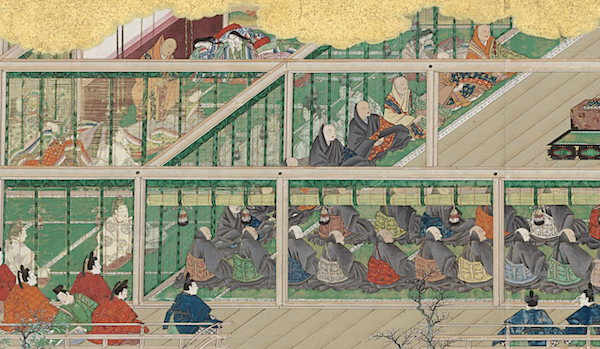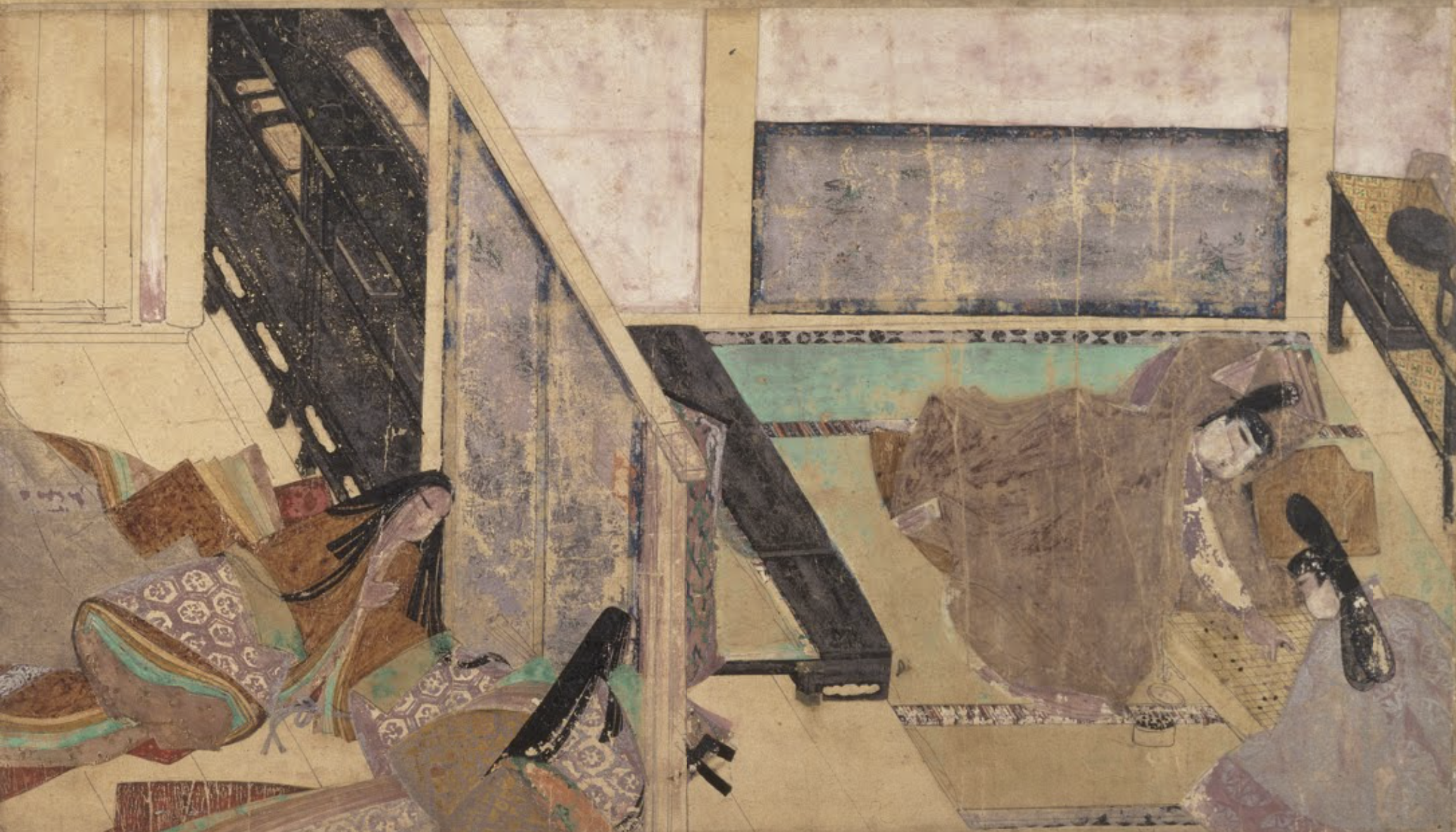
traditions of Japan from crica 1000 BCE (the Jōmon Period) to the late twentieth century and the end of the Shōwa Peroid in 1989. Our approaches will be both chronological and thematic.
First, we will consider how Japanese civilization developed in and through history. (This is the chronological part!) While this course is a survey and introduces the basic arc of Japanese history, it is not meant to be comprehensive or to tell “the story of Japan” in an unbroken narrative. Instead, we will focus on specific epochs and moments in Japanese history that reflect the changing status and roles of aristocratic, monastic, Shogunal, and merchant culture; the transition from a feudal to a modern society; war and recovery; natural and manmade disasters, and the formation of the modern Japanese nation as we know it today.
Second, in our study of Japanese civilization we will also engage with six major themes: 1) cultural encounters; 2) national identity; 3) religion; 4) gender; 5) war; and 6) the environment. (This is the thematic part!) Throughout the semester in a variety of contexts, we will examine how these themes express the changing social and political landscape of Japan. We will also use these six themes to engage fundamental questions such as: What is the nation of Japan? Who are the Japanese? For the whole of the twentieth century, intellectuals and cultural leaders in Japan were strongly focused on the idea of “national character” or kokuminsei 国民性. Do you personally think that there such thing as a national character or not? What are the implications?
In addition to this objective – that is, offering a chronological/thematic exploration of Japanese history and culture -- this course also serves as an introduction to humanistic inquiry more generally and helps students develop basic academic skills that will serve them throughout their college career and beyond. These skills include the ability to identify and use of primary and secondary sources; critical thinking, writing, and looking; as well as, a facility for expressing ideas orally to peers in formal and informal settings. (It is a Domain A course.)
First, we will consider how Japanese civilization developed in and through history. (This is the chronological part!) While this course is a survey and introduces the basic arc of Japanese history, it is not meant to be comprehensive or to tell “the story of Japan” in an unbroken narrative. Instead, we will focus on specific epochs and moments in Japanese history that reflect the changing status and roles of aristocratic, monastic, Shogunal, and merchant culture; the transition from a feudal to a modern society; war and recovery; natural and manmade disasters, and the formation of the modern Japanese nation as we know it today.
Second, in our study of Japanese civilization we will also engage with six major themes: 1) cultural encounters; 2) national identity; 3) religion; 4) gender; 5) war; and 6) the environment. (This is the thematic part!) Throughout the semester in a variety of contexts, we will examine how these themes express the changing social and political landscape of Japan. We will also use these six themes to engage fundamental questions such as: What is the nation of Japan? Who are the Japanese? For the whole of the twentieth century, intellectuals and cultural leaders in Japan were strongly focused on the idea of “national character” or kokuminsei 国民性. Do you personally think that there such thing as a national character or not? What are the implications?
In addition to this objective – that is, offering a chronological/thematic exploration of Japanese history and culture -- this course also serves as an introduction to humanistic inquiry more generally and helps students develop basic academic skills that will serve them throughout their college career and beyond. These skills include the ability to identify and use of primary and secondary sources; critical thinking, writing, and looking; as well as, a facility for expressing ideas orally to peers in formal and informal settings. (It is a Domain A course.)
- Enseignant: Hank Glassman

- Enseignant: Erin Schoneveld
Premodern Japanese Literature introduces students to central texts of Japanese literature from earliest times until the nineteenth-century. We will consider major literary forms (waka poetry, literary diary, court tale, warrior tale, Noh drama, Bunraku puppetry, travel narrative, and illustrated popular fiction) and how they relate to, respond to, and build upon each other. We will also explore the relationship between text and performance, and the material culture surrounding the production, transmission and reception of literary texts. Through readings, discussions, weekly writings, students will gain familiarity with the major genres of pre-modern Japanese literature, and develop observation and analytical skills to approach literary texts within their specific cultural and historical contexts. Works surveyed include well-known pieces such as The Tale of Genji, The Pillow Book and Bashō's Narrow Road to the Deep North, as well as recently transcribed illustrated manuscript Shudō tsūya monogatari (1713).
- Enseignant: Honglan Huang
What happens when we pay attention to how books are made and how readers physically engage with the books? How do we think about books and printing beyond traditional emphasis on replication and transmission? What might different printing techniques teach us about our own perceptual and interpretive processes? In this course, we will focus on Japanese book art from early illustrated scrolls to contemporary artists' books and explore a range of printmaking processes such as mokuhanga (woodblock printing), katazome (precursor to modern screen printing), lithography and mimeograph printing. Each unit is paired with a hands-on exercise that introduces a printmaking or bookmaking technique such as suminagashi, stab binding, stencil cutting, and kitchen lithography. Through readings, discussions, and hands-on activities, students will gain vocabulary to describe the materiality of printed books and contemplate their social and conceptual implications, as well as discovering how books and printing can challenge perceived assumptions about art and reading.
- Enseignant: Honglan Huang